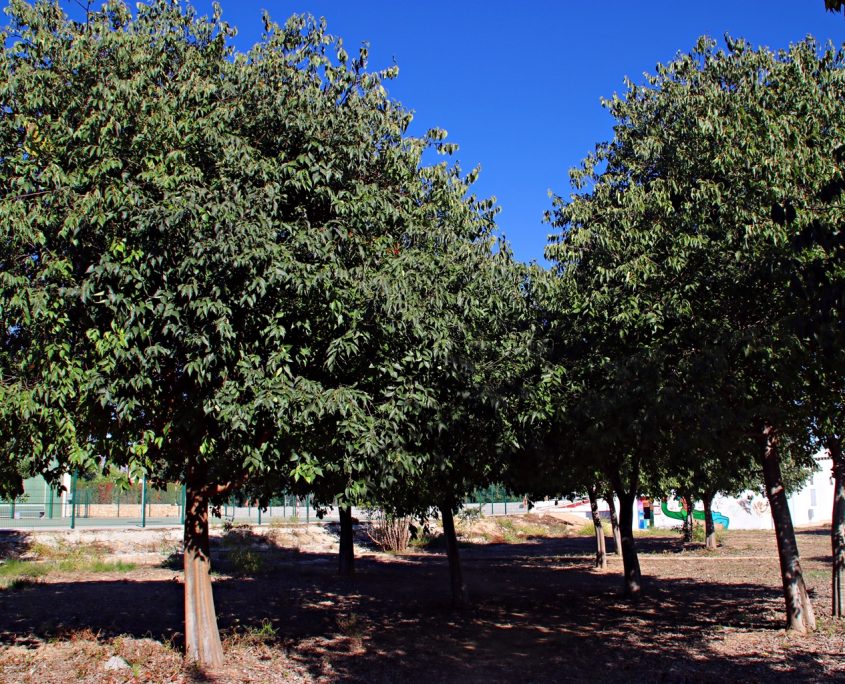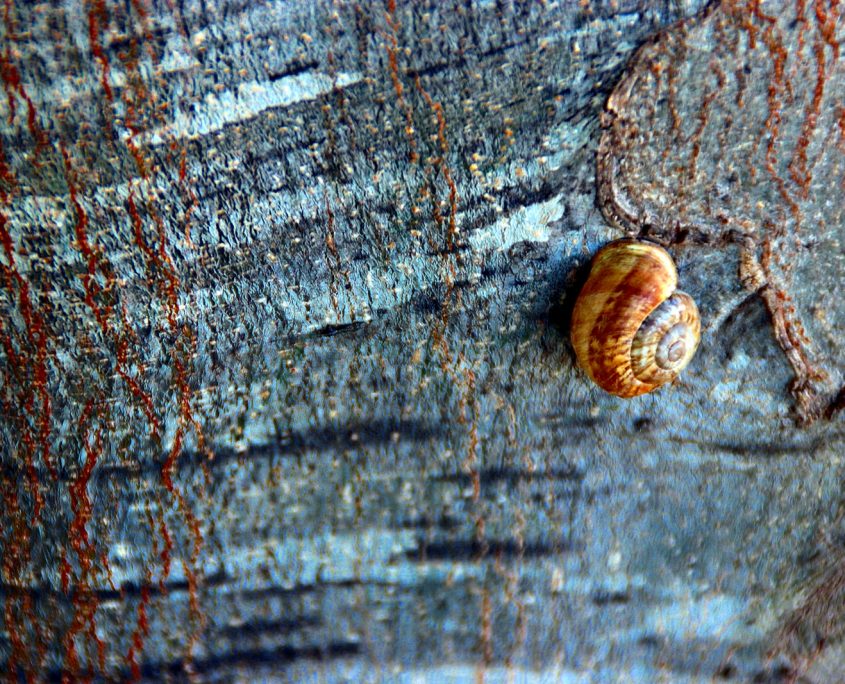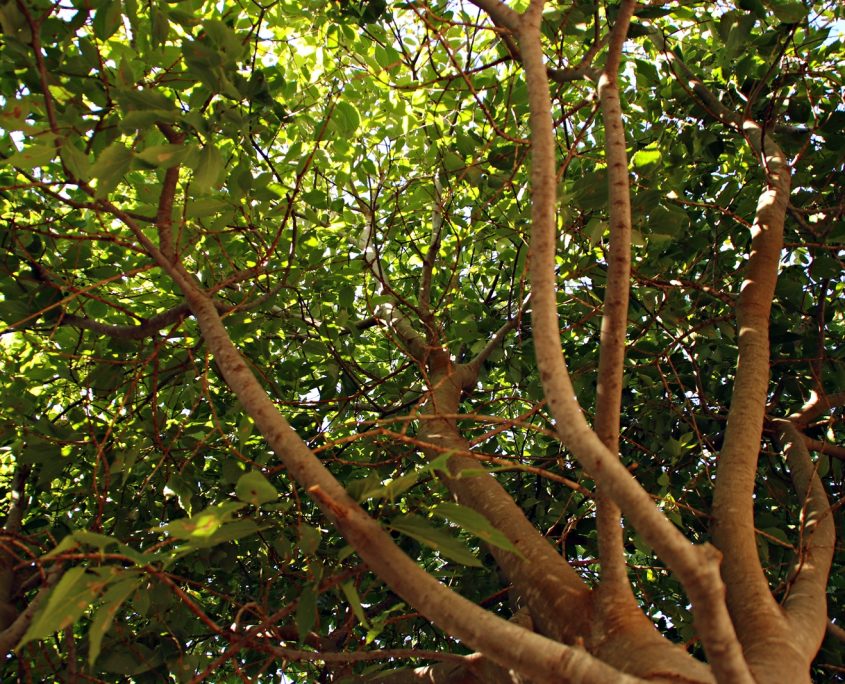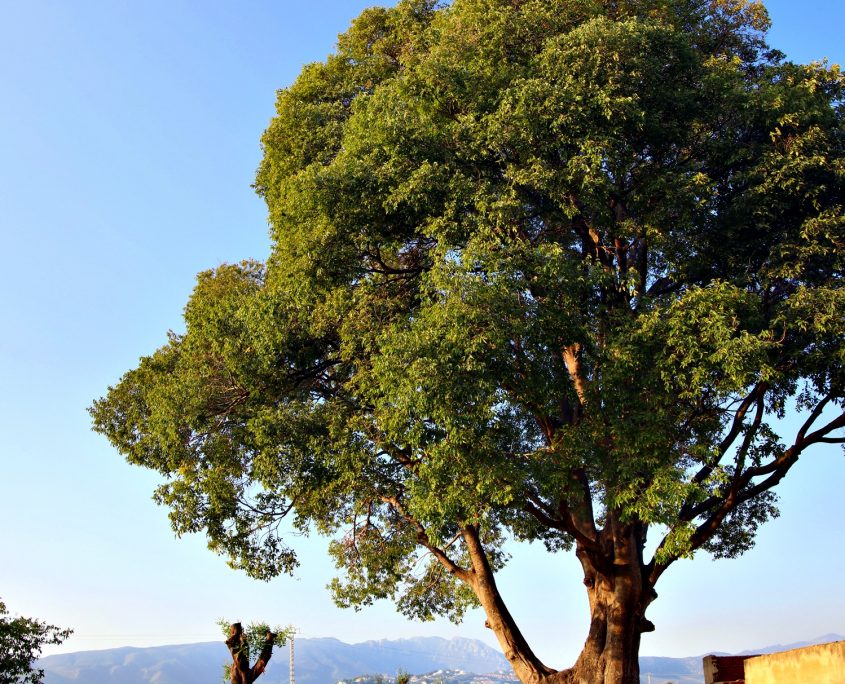Celtis Australis – Family: Cannabaceae
General characteristics
Deciduous trees, which are round in shape and can reach from 15 to 25 m high.
Their bark is smooth, of light grey colour.
Its leafes are simple, asymmetrical, with a pointed and oval shape, and a jagged edge of 5 to 15 cm long and 4 to 6 cm wide. They are dark green on the front and a lighter shade of green on the back, they feel hairy and rough when touched.
It blooms in April and May. Its light green flowers are isolated and little pleasing, and they grow at the same time as the leaves.
The fruit (hackberry) is small (1 cm), it is round and smooth; first is green and when ripening it becomes black. It is edible but it hasn`t got much flesh and a rather big pit for its size.
Uses
It is an ideal tree to build tools for agricultural work from different seasons. Its flexible wood, used since the Neolithic period, has been used to make the handles of the following tools: hoes, sickles, axes, picks and mallets. Also the forks to winnow wheat, barrel rings, charriot forks, plough yokes, whips, ski poles…but what this strong and flexible wood most offers us is hayforks. In this case, it is very interesting to see how this type of tree branching is of great use to make a wide variety of hayforks, all with diverse and well arranged spikes.
The Valencian botanist AJ Cavanilles, in his book Observations about natural history (1795), has also left us with complete information about the use of this type of wood in many Valencian regions; such as this particular case of farmers from the Valley of Cofrentes:
“they allow new branches to grow five feet, so that they grow into a straight pole without knots, and until they reach that height the smaller sticks keep growing perpendicularly: when the new sticks reach such state, the farmers will keep two, five or more small branches in order to make more spikes for the hayforks…these are so useful to winnow the unthreshed grain, to collect and load the hay, among other uses in the fields, with the advantage of this wood being of one single piece.”
Curiosities
This tree belongs to the group of the four “royal” shades: Hackberry, Mulberry, Lime tree and Holm oak. Hence, under the shade of this tree one will always feel nice and cool.
A hackberry tree at the entrance of a farm or a house in the country is a sign of welcome, or better said, it was in the past. Nowadays we won´t be able to reach the entrance of many of the old houses which have been converted into bunkers closed to visitors.
Tradition says that if one has a cattle dog tied up under the huckberry tree at the entrance of the house, apart from keeping the house, the dog will neither be rabid nor turn against its owner. This seems to happen due to the protective effect of this tree.
Hackberries from the Sports Centre
The 15 huckberry trees are located next to the Sports Centre, in a public recreation area designed for the practise of healthy life activitites.
Their trunk perimeter measurements are between 0.5 and 0.84 approximately, with an over 5.5 metres cup. These trunks are unique, except for two trees that have double trunks, they are vertically and naturally shaped, with the lower branches pruned.
CONDITION: Not severelly pruned.
ASSOCIATED LIFE: Snails, a variety of birds, and traces of pets.
ENVIRONMENT:
- NATURAL: Completely permeable ground, with abundant grassy vegetation.
- ANTHROPIC (man-made): The recreation area near the Sports Centre and the Hort-i-Cultura (horticulture Project) site.
Location:
GPS parking location:
X, Y: 38.91877, -0.19228
GPS tree location:
X, Y: 38.91825, -0.19141
Ethnobotany and/or associated history:
We will arrive to the Sports centre car park, having taken the Old Path from Gandia (former cart driver path, of medieval origin which crossed all the municipal area across the village centre from north to south). There we can find the public swimming-pool, the tennis courts, the 5 aside football and basketball fields; and next to these, we will find the Sports Park and finally the 15 hackberry trees.
The hackberry is considered to be the “hayforks tree”, and in the old times it was a very precious tree, because people could:
1.- Make tools used in different agricultural seasons and cycles. Its flexible wood used since Neolithic times has been used to make the hoes, sickles, picks and mallets…
2.- Use it as a means to avoid EROSION. The water irrigation systems (or canals) were made with stones and earth, and the hackberry roots in them avoided erosion.
3.- Keep the fire going in the sugar cane mills thanks to the hackberry wood, so useful to make COAL.
4.- Used its leaves as FORAGE for cattle, particularly for the flock of sheep and goats.
5.- Eat its fruit, the hackberry, a drupe slightly bigger than a pea, that ripens throughout summertime; in autumn it acquires a blackish colour; the pulp has a sweet and floury taste, and it is rich in VITAMIN C, iron and potassium. Oil could also be extracted from the fruit, and people could also make healing and alcoholic drinks. Moreover, the fruit is considered to be a good antidote against diarrhoea.
6.- When agriculture first appeared, the hackberry was in charge of protecting the strategic sites and the places of worship. Hence, it is also called a sanctuary tree; the moors used to walk to these sites to ask for a bodily favor following the ritual of getting wet with the water that sprung form certain corners; therefore, as a witness of these favours asked, people left their capes hanging on these trees. As you can see from this, all from the hackberry tree was widely used, even for spiritual purposes, by the people of those times.
An extra itinerary to this route is suggested if you’d like to visit the hackberry tree located at the Merlich area. Its total height is 23,50 metres, with a trunk perimetre of 5,77 m., and with a cup diametre of 24,30 m and a perpendicular diametre of 19,40 m. These impressive measurements mean that it is one of the biggest in its kind in Europe; (we have another reference of a hackberry tree in Treviso with similar measurements, precisely 5,72 m trunk perimetre and aged 157 ± 20 years).
Nowadays this hackberry tree from the Merlich area is protected as a special specimen by the Town Hall of Ador, thanks to the initiative suggested by the Col.leciu Nostra Terra (from Potries).
On foot acces to parking:
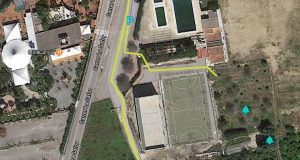

Accessibility adapted to everyone.

